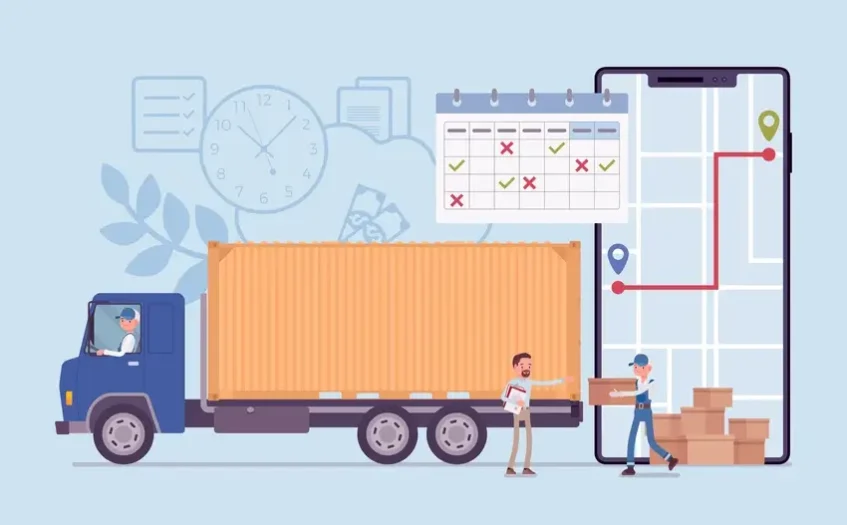
For service businesses providing an outstanding customer experience takes center stage. The linchpin to achieving this lies in the coordination of multiple elements, with the optimization of scheduling and dispatch processes emerging as the beating heart of this intricate orchestration.
In this fast-paced environment, the strategic finesse applied to these essential components becomes the catalyst for unparalleled service excellence, propelling businesses toward the zenith of customer satisfaction.
This blog will explore how businesses can harness the power of scheduling and dispatch to not only enhance their customer experience but also improve service effectiveness, resource allocation, and operational efficiency.
This exploration delves into the profound impact of scheduling and dispatch optimization on service businesses, unraveling the intricate threads of enhanced customer experience enhancement, streamlined operations, and the seamless orchestration of tasks.
Understanding the Foundations of Scheduling & Dispatch
Scheduling and dispatch are the backbone of any service-oriented business. Efficiently managing field service scheduling ensures that resources are allocated appropriately, time is utilized effectively, and service delivery is optimized.
Traditional methods of dispatch and scheduling are often manual, time-consuming, and prone to errors. However, with the advent of advanced technologies and innovative software solutions like Arrivy , businesses can now elevate their field operations to new heights.
Key Features Found in Popular Scheduling & Dispatch Softwares
To embark on the journey of enhancing customer experience, businesses must invest in cutting-edge scheduling and dispatch softwares. These systems are designed to streamline processes, automate workflows, and provide real-time insights into field service scheduling. Some key features to look for in a dispatch and scheduling software include:
Real-Time Tracking
Field service management softwares are capable of tracking the location of field service personnel in real-time. This helps enhance communication between the office and field teams.
Routing Algorithms
Businesses can optimize travel routes to minimize travel time and fuel costs for their field team. This can improve overall service efficiency by helping businesses find the most optimal routes for field service personnel.
Logistics Management
The visualization created by a good FSM helps in streamlining inventory management for efficient service delivery. Ensuring the right equipment and materials are available when and where needed.
Workflow Automation
A good scheduling and dispatch software can automate repetitive tasks to reduce manual errors and increase efficiency. This helps enhance overall operational efficiency by streamlining manual processes.
Robust Integrations
Businesses can seamlessly integrate scheduling and dispatch softwares within their existing systems. Ensuring a unified tech stack for comprehensive data analysis and reporting.
How Scheduling & Dispatch Optimization Can Aid Customer Experience Enhancement
Service Efficiency
By optimizing dispatch, service businesses can significantly improve their overall efficiency. Reduced travel times, streamlined workflows, and automating processes that contribute to quicker service delivery, ultimately leading to satisfied customers.
Resource Allocation
Efficient scheduling ensures that resources are allocated based on demand and priority. This means deploying the right personnel with the necessary skills and equipment to the right location at the right time. This not only saves costs but also enhances the quality of service.
Time Management
With optimized scheduling, time becomes a valuable asset. Field service personnel spend less time on the road and more time addressing customer needs. This not only increases productivity but also allows for a higher volume of service requests to be fulfilled.
Operational Efficiency
Automation of workflows and the integration of technology contribute to overall operational efficiency. This efficiency translates into smoother processes, reduced errors, and a more agile response to changing circumstances.
Real-Time Tracking and Communication Systems
Real-time tracking enables businesses to provide customers with accurate updates on service arrival times. Additionally, improved communication systems between field teams and the office ensure that any changes or issues are promptly addressed, enhancing overall transparency and customer satisfaction.
Conclusion
In the ever-evolving landscape of service businesses, staying ahead requires a commitment to innovation and optimization. By investing in scheduling and dispatching software like Arrivy, businesses can not only meet but exceed their customer expectations.
The resulting improvements in service efficiency, resource allocation, time management, and operational effectiveness create a positive feedback loop that benefits both the business and its customers.
As technology continues to advance, embracing dispatch and scheduling optimization becomes not just a competitive advantage but a necessity. The ability to provide exceptional customer experiences hinges on the ability to navigate the complexities of field service with precision and efficiency.
